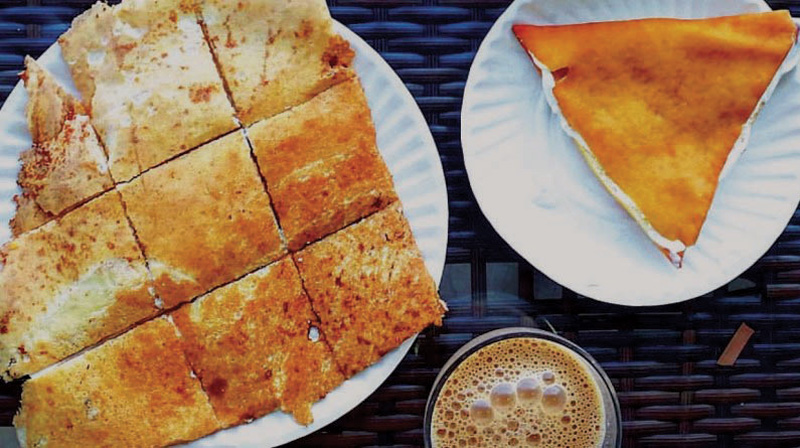

A trip to Bait al Safah in Al Hamra is a trip down memory lane. But unlike other tours, this one allows you to have a real feel of what it was like to live in an era where women are the queens of the kitchen and how, even as time progressed, they were vital partners in running an organised home. As a living museum, one of the highlights of any visit is the interaction with the matriarch of the family as she navigates the kitchen, and she prepares key food that is served to the family. Here, surrounded by the smoke-stained walls with sunlight peeping through an opening in the roof of the mud house, the matriarch spends a great deal of time preparing one of the kitchen staples — the Omani bread, which has evolved with time becoming one of the most versatile of the Omani recipes.
While preparing Omani bread has gotten easier and are now commercially available, the road to its current popularity is filled with sacrifices and hard work. “In the past, we see how Omani bread is made from beginning to end. We were there when the wheat is planted, and collectively with our families, we collect and harvest the grain in this very special, meaningful ritual. We learned from our mothers and neighbours how the grains are grounded and with interaction, we were exposed in how to make great, delicious Omani bread,” shared Nasra al Hinai, a septuagenarian who claimed she had been making the bread since she was little.
“We didn’t have the luxury of buying ingredients from the store, so we have to make them ourselves. From the flour to everything else that is mix to the bread, we have to source them within the neighbourhood. It’s where we learned to be independent and inventive,” she added. Making the perfect Omani bread is a secret kept by every family and the recipes, and the bread-making process have been passed down from generation to generation. “Even today, Omani bread can be anytime in any meal of the day. You can see some eating it for breakfast and others for dinner. It’s impossible to find an Omani who don’t know it because it is loved,” Nasra said.

There are many types of Omani bread, and there are also different tools used to make it. In Oman, many of the families usually used what is locally known as “tobag,” a heave metal plate circular in shape that has a flat and sometimes convex shape. The most common way of preparing the bread is by adding salt, flour and water. “These are the basic ingredients. If you want to have delicious Omani bread, getting the portions right is important. After mixing the salt with the flour, women have to gradually add water until the dough reach a certain consistency,” Nasra shared.
“In a frying pan or Tobag, make sure that it’s on medium heat and wipe it with ghee before starting. Take a ball of dough that is the size of the palm of your hand and completely cover the Tobag, and wait for the bread to be golden brown. Then take it out of the pan quickly using a flat ladle. When making this, women usually have a container with water nearby. This is to keep the hands wet so it’s easy to manage the dough,” Nasra said. “And put a little ghee after cooking the bread and before serving it to be eaten,” she shared. “The women of our generation, especially those coming from the same village, we all learned the basics of making Omani bread. Unfortunately, not a lot of the younger generations carry on the legacy,” Nasra pointed out.
The enduring legacy of the Omani bread can be observed not only in places like Bait al Safah or the Muscat and Salalah Festivals but also in many modern bakeries, groceries and food shops. “The smell of the freshly made bread brings a lot of memories and it is because of its versatility that it managed to find a space in today’s modern, fast-paced world,” Maryam, a young Omani who grew up eating Omani bread and now working in Ghubra, shared.
“For many Omanis, the Omani bread is best served with a good amount of crushed Chips Oman and cheese and sometimes even with scrambled eggs. They also consumed it by the thousands garnished with honey or Nutella making it a delicious afternoon snack,” she added. On a related note, a study conducted by Dr Amanat Ali from the Department of Food and Nutrition Sciences at the College of Agricultural and Marine Sciences at Sultan Qaboos University discovered that Omani bread is one of the healthier bread choices in the market today. In her study, Dr Ali said daily consumption of the bread is healthy because of its lightness and low bad cholesterol content and carbohydrates.
BY RUQAYA AL KINDI & YERU EBUEN
Oman Observer is now on the WhatsApp channel. Click here



